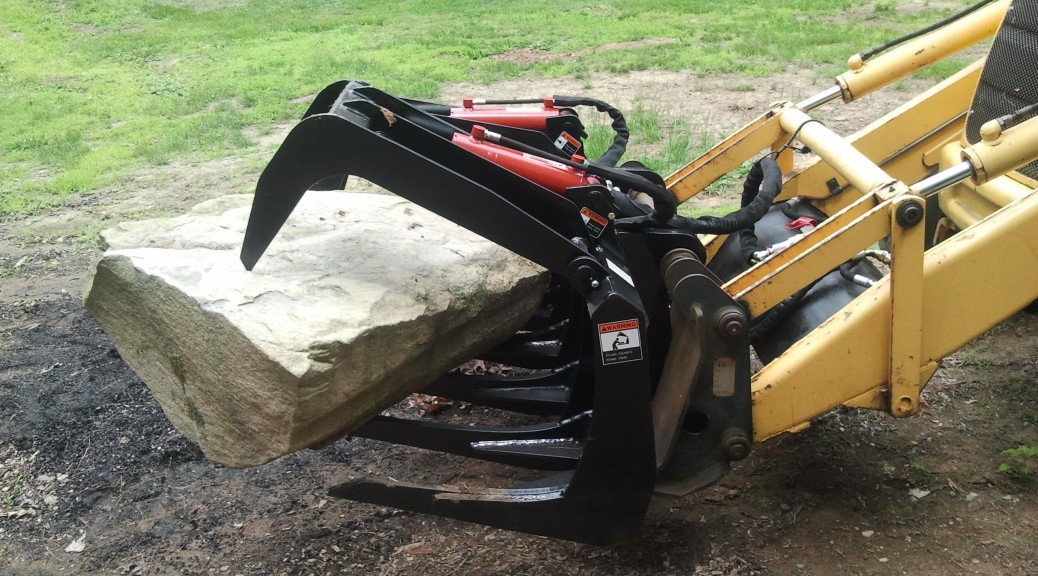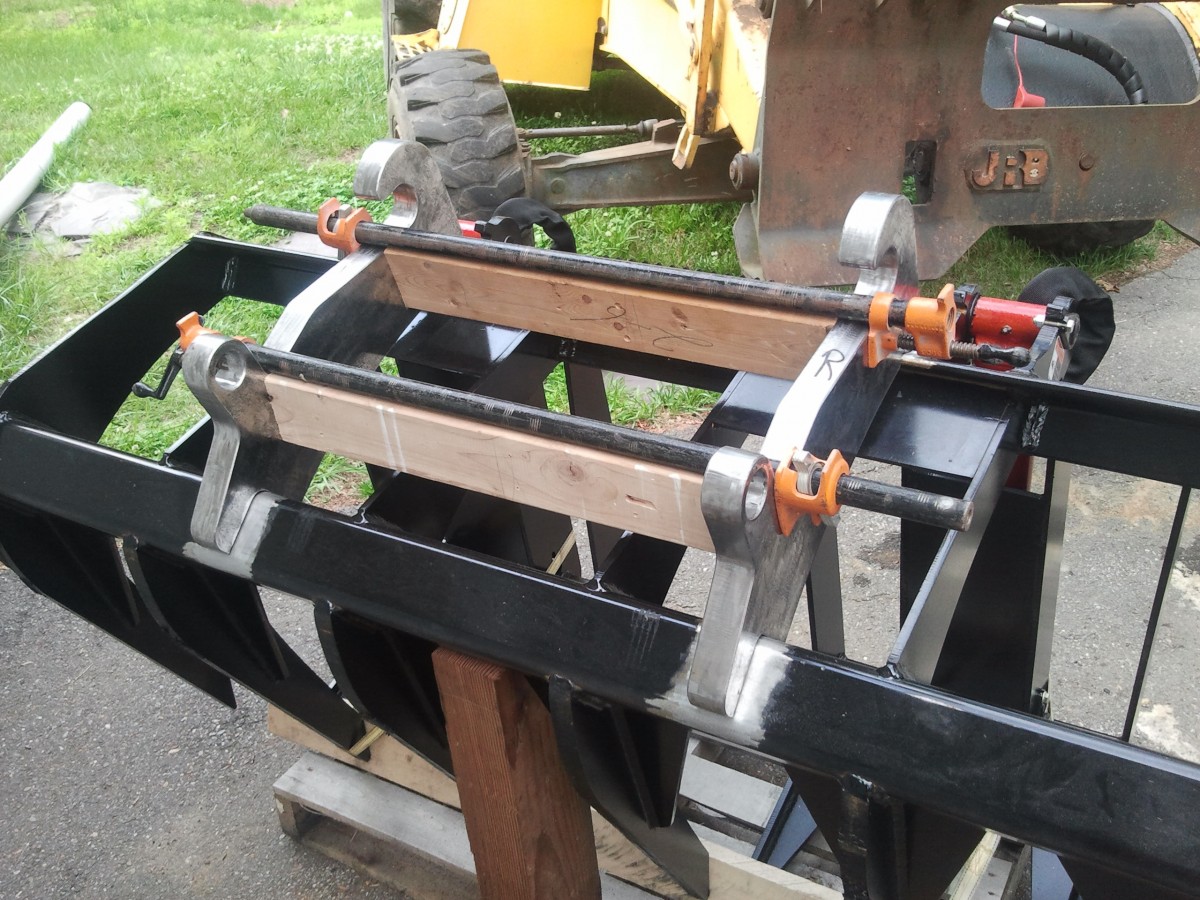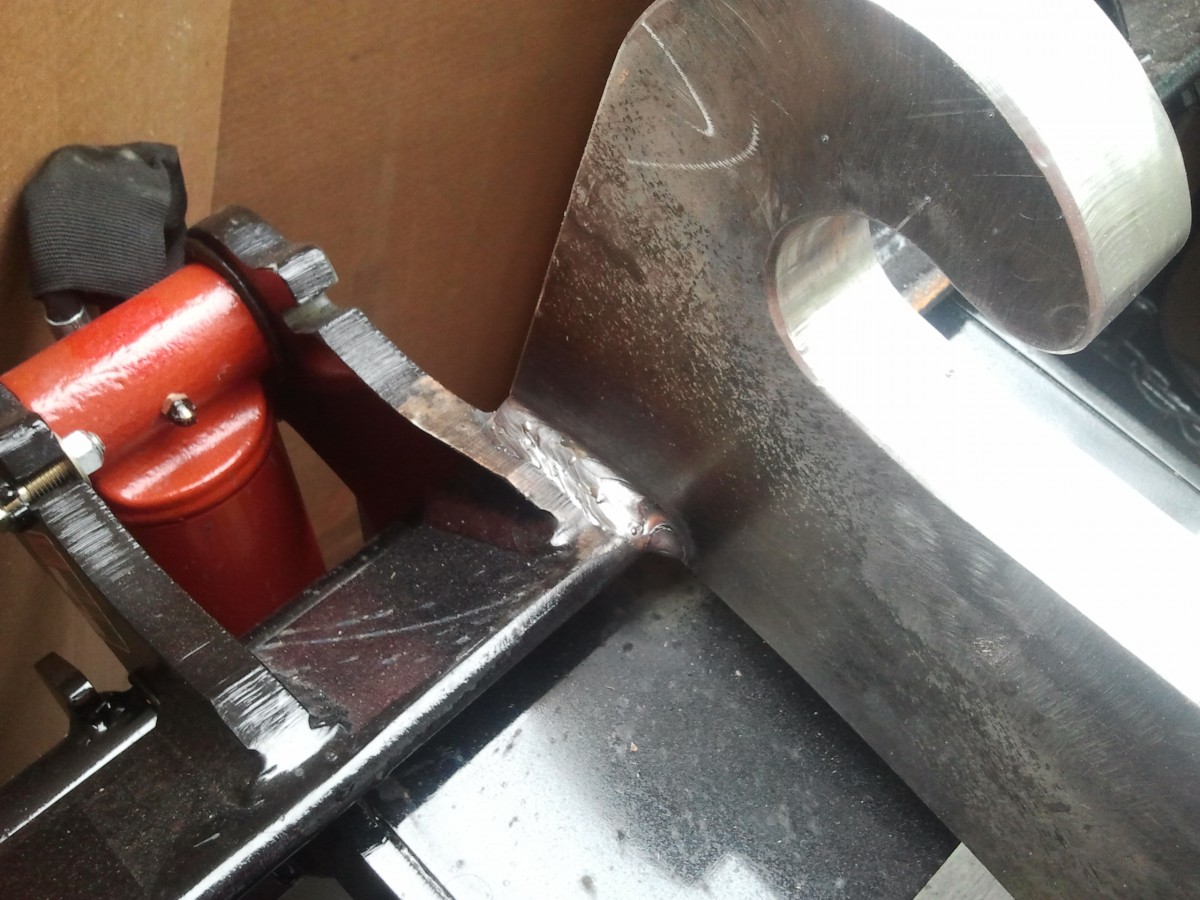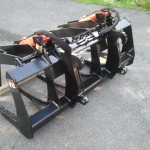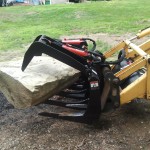
Millions of years ago, seeds of Petram immobilem var. murus were planted in New England. Since this is a hardy perennial here in Zones 4 & 5 we are blessed with a bumper crop each and every year.
In order to harvest our yearly crop of P. immobilem (Common name: New England wall stone) , I needed to add a grapple to my backhoe which involved a little reverse engineering for the attachment.
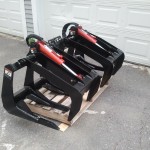
I did quite a bit of research on rock/root grapple attachments on the Internet, and both the Faver and ANBO brands stood above all others due to their engineering and workmanship. I ended up purchasing a Faver GX series grapple mainly because it was made with 1″ thick AR-400 heat-treated steel — by far the strongest offering. This stronger steel also allowed Faver to do away with the bracing at the front of the tines allowing them to easily penetrate the ground to get under rocks and roots.
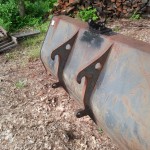
Normally, Faver ships their rakes with a standard skid-steer quick attachment plate, however my tractor has a loader style quick attach so I ordered my grapple without the skit-steer mount so I could fabricate my own. According to the data plate on the tractor portion of the mount, it’s a JRB 655E, but no documentation for this mount was to be found in the Internet. To start the fabrication process, I needed to reverse engineer the existing mount. The ears on the current bucket were what I would need to duplicate for my grapple.
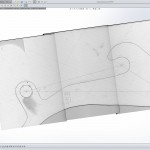
I started by tracing the existing bucket ears onto a piece of cardboard. This was scanned in three sections and brought into SolidWorks. Each section was scaled horizontally and vertically and then reassembled. Key dimensions measured from the cardboard tracing were then verified in SolidWorks.
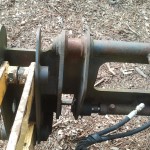
With the bucket attached to the tractor, the bottom of the bucket was leveled with the ground and the angle of the ears with respect to vertical was measured. The bucket was detached and the tractor portion of the mount was repositioned as if the bucket were level.
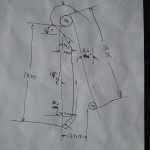
A (very rough) sketch of the tractor mount was then made using a digital protractor, tape measure and digital calipers. This geometry was then sketched in SolidWorks.
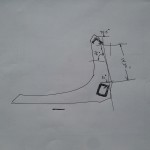
A similar rough sketch was made of the grapple structural members when the bottom surface of the tines were level with the ground.
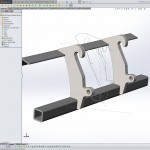
These three sketches were then combined and used to create an “ear” design for the Faver grapple.
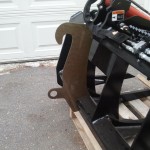
An acrylic template was lasercut to verify the fit on both the tractor and grapple before the ears were plasma cut from 1.5″ thick A36 plate by Central Steel.
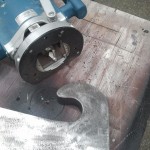
Once the new steel ears (weighing in at 50# each!) were cut, the mill scale was removed and the edges chamfered. The chamfering was done with a regular carbide router bit intended for shaping wood. The bit made it easily through all the steel chamfering but the edges did get a little chipped so I’ll need a new one for my woodworking projects.
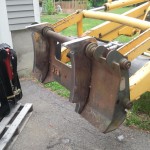
Before welding the ears on the grapple, a final test fit was made on the tractor attachment to verify fit and spacing. A couple of wood 2x4s were cut to use as welding jigs to maintain the spacing. Finally, 3-pass MIG welds were used to solidly attach the new ears to the grapple.

